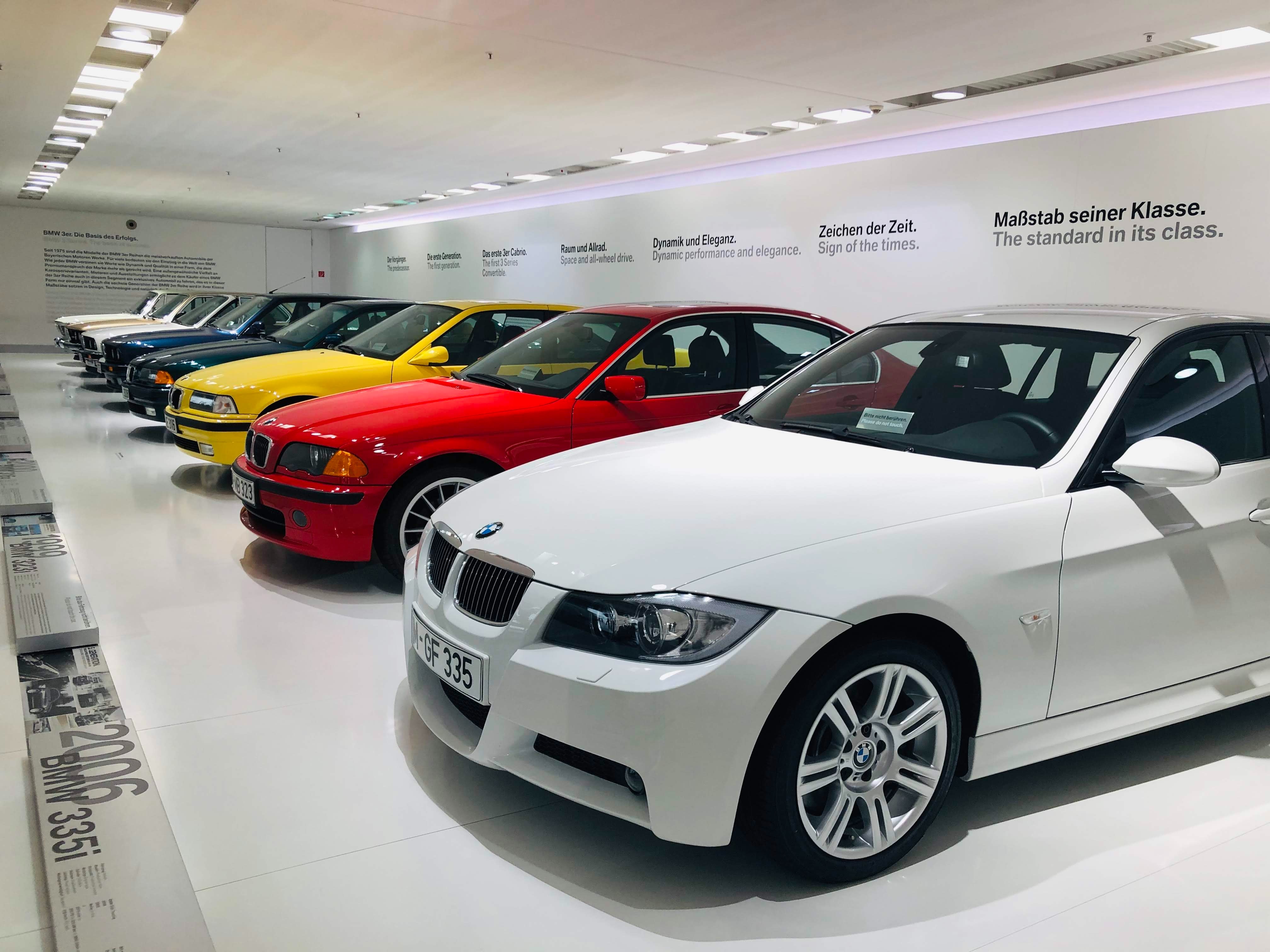Digital marketers today have seen the rise and fall of different advertising trends and technologies. So they know well that nothing is truly a silver bullet solution that will change the advertising game.
But once in a while, a marketing innovation comes along that comes close. You guessed it, we’re talking about dynamic inventory advertising for car dealerships.
Being able to automatically generate targeted ads that highlight the exact cars and offers available at the dealership is indeed a game-changer. And the technology around inventory-based advertising has advanced rapidly in the past few years.
Now, it is possible to streamline and automate the creation of dynamic campaigns across Search, Social, and Display. There are new hassle-free ways to generate inventory feeds. And campaign managers have more and more consumer behavior signals at their disposal to squeeze out efficient CPMs, CPCs, and CPAs.
Think your agency can benefit from the efficiency and scalability of dynamic inventory campaigns? We outline everything you need to know below.
What Are Dynamic Inventory Campaigns?
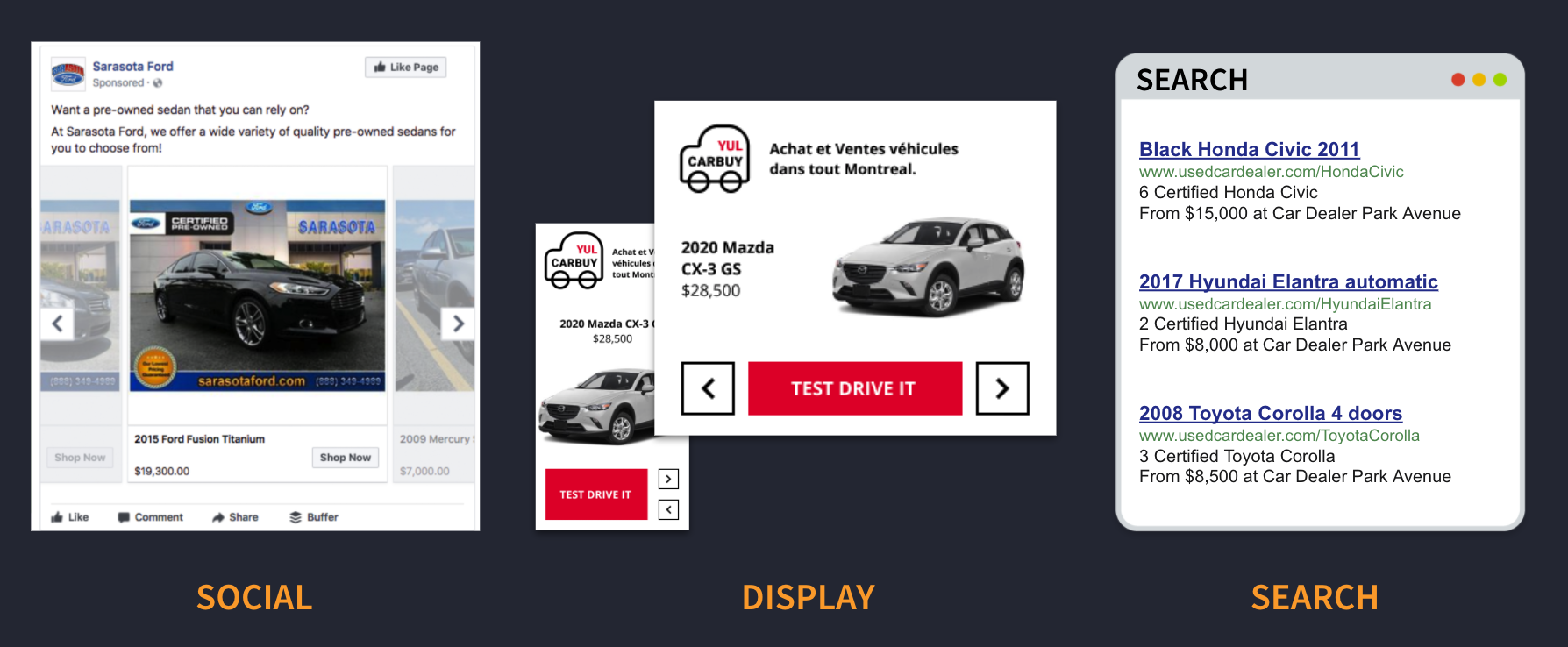
Let’s start with basic definitions. Dynamic inventory ads are generated automatically based on data contained in inventory feeds like car model, year, make, pre-owned/new, price, VIN number, and more. These variables are dynamically updated for individual viewers and contexts in search and display ads.
To determine which models from a dealer’s inventory show up in ads, algorithms factor in signals such as a user’s location, search history, browsing history, and VDP visits. And of course, ads will not be shown for any cars that are no longer in stock.
Once the setup is done for a dynamic inventory campaign, all of the above happens automatically at the auction-level. Campaign managers only need to track the results and optimize as needed.
Imagine the work required to do all of the above manually –it would simply not be feasible. Dynamic inventory campaign technology really does open up new possibilities for automotive marketers looking to scale!
How Do Dynamic Campaigns Influence the Car-Buyer Journey?
By now all dealers know that vehicle buying trends are shifting towards more time spent on online research and less time spent inside dealerships. But many are still constantly refining their recipe of online touchpoints to maximize sales.
Dynamic campaigns are a great addition to any dealership promotion strategy. Why? The targeted and hyper-relevant nature of inventory-based advertising essentially creates a “virtual car lot”. Users are shown the actual cars available at the dealer before ever setting foot in the showroom.
Nowadays, dynamic inventory ads aren’t restricted to search campaigns either. Technology now exists to streamline setup from beginning to end for social and display channels as well.
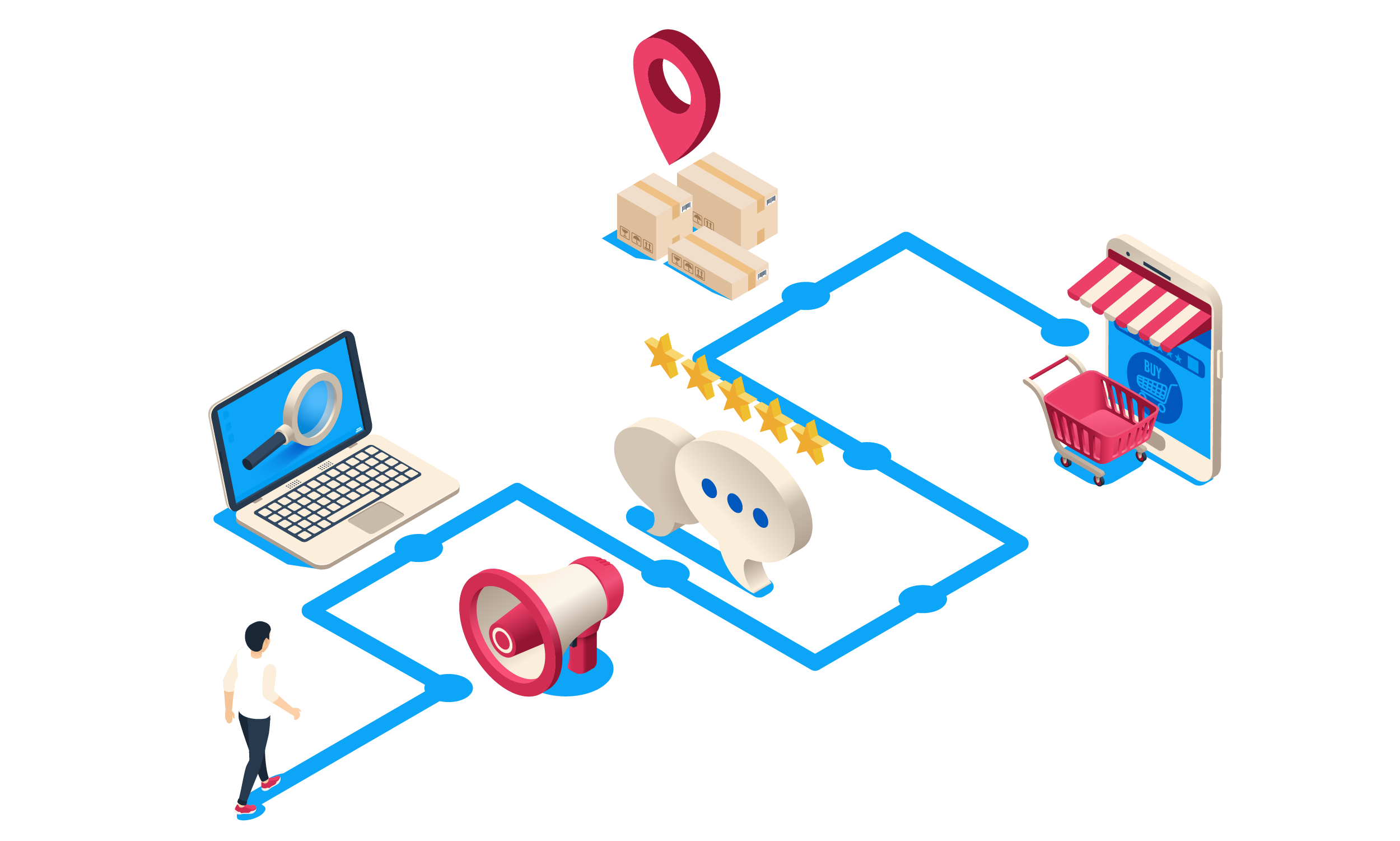
Take the example of a car-buyer named Catherine. She might begin her journey by deciding what type of car she wants. She might be searching for terms like “best electric minivan” or “best family compact SUV.”
At this point, it is too soon to show her search ads with copy like “2019 Honda Odyssey, $37,000”, but she might be more responsive to an ad featuring an image of the Honda minivan.
Of course, that search ad will be essential lower in the funnel. When Catherine has decided what model of Honda she wants, maybe she’ll even have visited your dealership’s VDP, you want to make sure to stay top of mind with dynamic search ads and retargeting.
The point is that you want to cover all these different aspects of the car-buyer journey. And dynamic campaign ads across different channels are a great way to achieve that goal.
5 Steps to Set Up Dynamic Inventory Campaigns
There are five main steps to generating dynamic inventory campaigns and there are certain considerations to keep in mind for maximum efficiency at each step. Let’s go over them together!
1. Generate an Inventory Feed
Of course, it all starts with getting a hold of your dealership’s inventory feed. That is the foundation for your campaign. The accuracy and timeliness of this inventory feed is essential to your success!
There are multiple solutions available on the market and they can be broadly categorized into two: internal-based feeds and external-based feeds.
Internal-based feeds are built from the dealership’s DMS data. Generally this requires the agency to coordinate between the dealer and their vendors. Oftentimes the dealer will need to be guided through the requirements of an inventory feed for the purpose of dynamic campaigns.
Details that need to be ironed out include FTP logins, data formatting, and update schedules. Inconsistent spelling of vehicle models in internal files can generate issues with the ads (for example spelling “sedan” as “sdn.”) Traditionally, internal-based feeds were the norm and it continues to be commonly used.
External-based feeds are a more recent development. The primary difference is that rather than using internal DMS data, inventory information is indexed from consumer-facing collateral to create a feed. This has the advantage of ensuring that all data is standardized and public-ready. In addition, external-based feeds do not require lengthy discussions with the dealership and their vendors.
Here at Acquisio, we generate inventory feeds using this second approach because it enables our clients to reduce time spent on logistical issues.
2. Define Your Targeting Strategy
Targeting options will vary depending on which channel(s) you create dynamic campaigns for. But in all cases, geographic targeting will be essential.
In our recent Digital Dealer webinar, Jim Flint, CEO & Founder of prominent automotive agency, Local Search Group, emphasized the importance of ZIP code profitability. You can take that a step further in the programmatic display channel because of an enhanced ability to target across devices within a given household.
Another aspect of targeting that’s unavoidable is search query-based. This type is obviously essential to automating the creation of search ads that match a user’s past searches. But it’s also used to inform dynamic display ads.
Further, audience data can be harnessed for targeting specifically when it comes to programmatic display dynamic campaigns. DSPs enable campaign managers to leverage data such as visits to car-related websites and browsing of branded vehicle content. Programmatic display also has the added bonus of enabling contextual targeting on car-buying sites.
Finally, a favourite targeting strategy is, of course, retargeting. This enables dealers to show timely and relevant ads to users that have landed on your dealership’s VDPs without making a purchase.
Needless to say the best approach is to layer multiple types of targeting to achieve maximum efficiency.
3. Generate Creatives
Ad creatives are generated automatically based on the inventory feed, thanks to ad templates that plug in the relevant values. This includes information like make, model, year, and more.
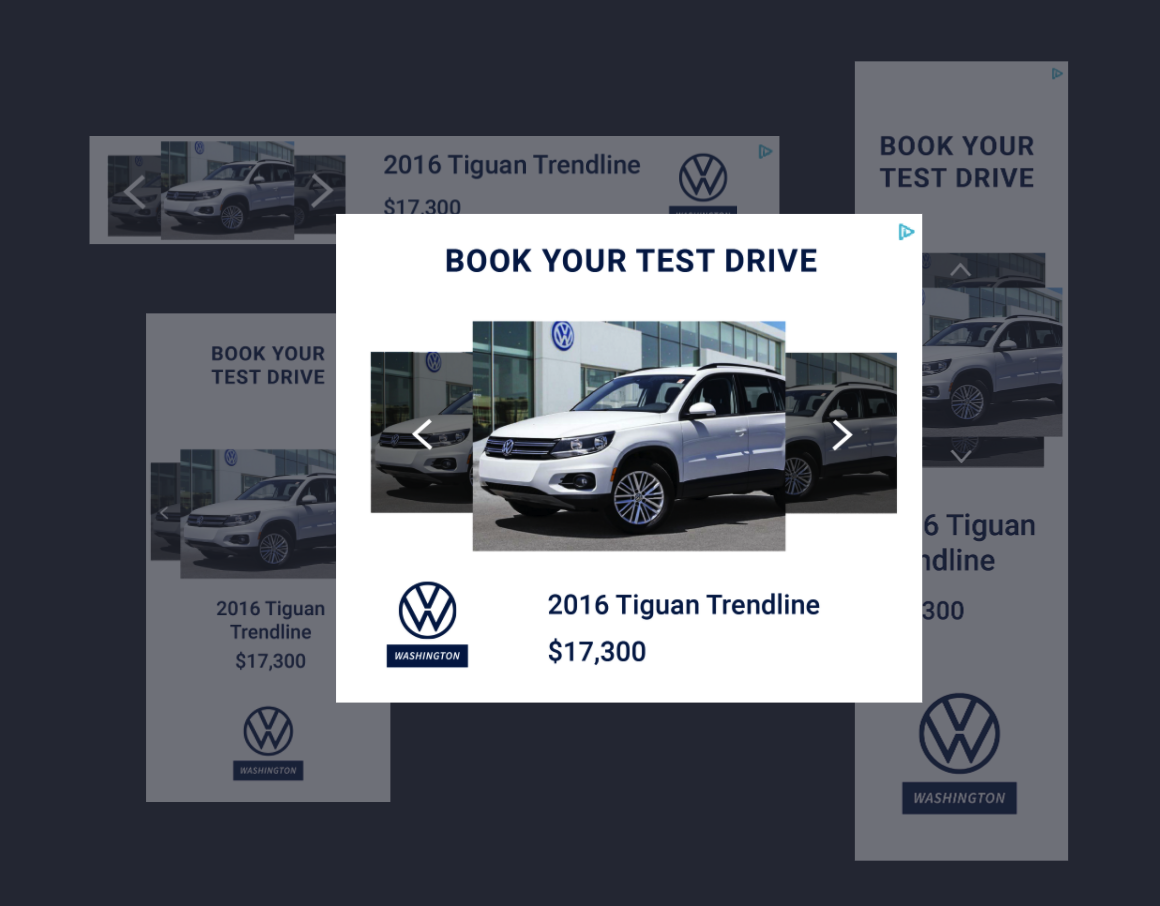
A quick note on dynamic creative optimization (DCO), which is frequently brought up in the same breath as dynamic inventory campaigns: they are not the same thing! DCO goes a step further in creative customization when compared to standard dynamic campaigns.
New creative is generated in real-time for each user and instance. Even the messaging and offer can be switched up based on AI-powered creative optimization.
DCO is a favourite tactic for agencies serving multi-location dealerships. While this topic is not within the scope of this blog post, our strategists are happy to answer any further questions you may have!
4. Set up & Launch Campaigns
Depending on the technology you use, the process for launching your campaigns can vary.
You can launch directly from within each publisher as long as you are armed with the correct link to your inventory feed. Here at Acquisio, we try to make that easier for you by generating feeds suitable for Google Search, Bing, Facebook, Google Display Network, and Programmatic Display, all from one place.
If you’re looking to streamline your process further, you can launch search, social, and programmatic display all through Acquisio Dynamic Campaigns.
5. Optimize & Expand
Be aware of what you are optimizing towards. One common mistake is optimizing towards KPIs that are not clearly valuable for the dealership.
Impressions are great, but clicks are better, and scheduled appointments are better still. So just make sure conversion tracking is set up properly to reflect these realities.
Also, we can’t recommend enough the use of AI-powered bidding to optimize your ad budget. Machine learning consumes data around the clock to make smart decisions at a much higher rate and capacity than human campaign managers can.
The only thing to remember is to give the campaign enough time to assemble some baseline data and begin optimizing! Algorithms need time to learn from the auction.
Designing an Effective Dynamic Campaigns Strategy for Agencies
It used to be that dynamic inventory campaigns were a Search phenomenon. And search-based dynamic campaigns are still a tremendous driver for ROI. That’s because you are capturing users when they are at the end of their buying consideration cycle. You can expect to see more direct results.
However, the latest innovations in dynamic campaigns mean that you can capture those potential buyers much earlier in the research process. Social and display channels are critical to seizing more mental real estate from prospective car buyers.
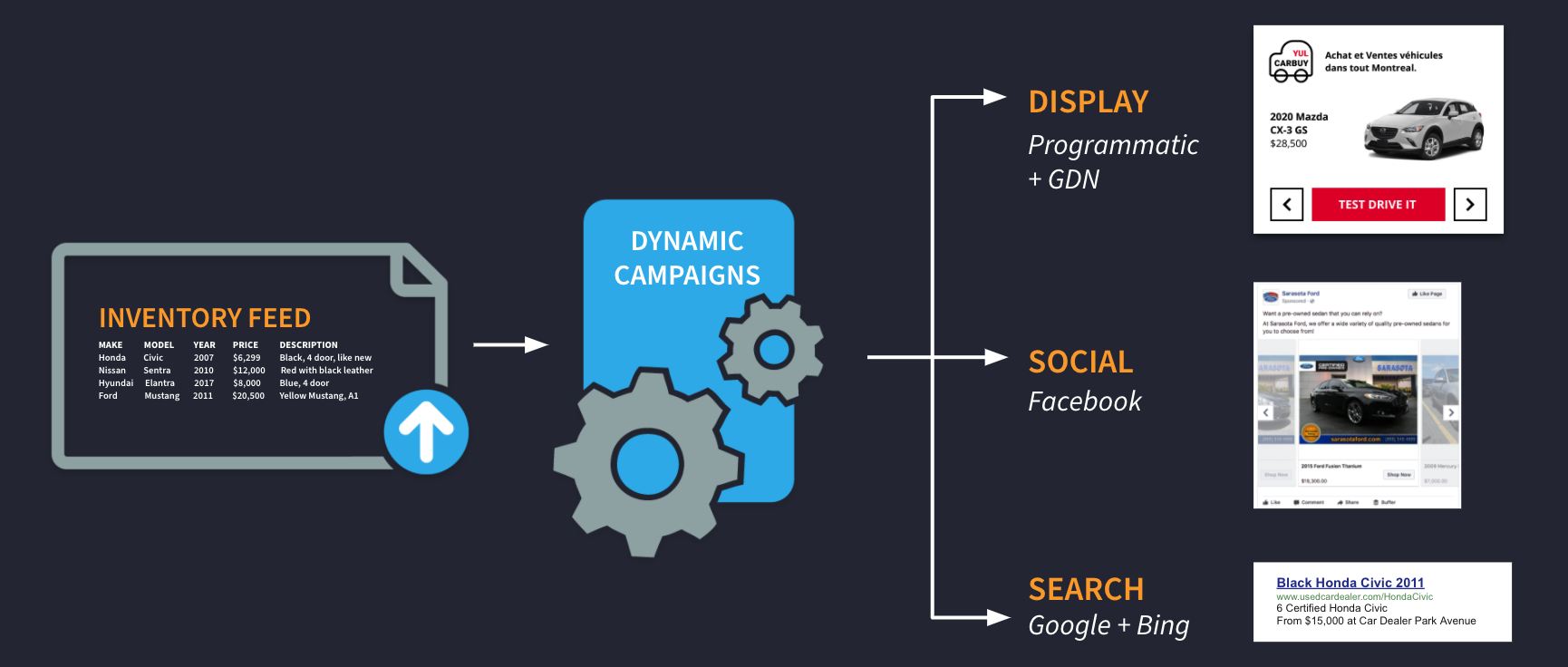
Display
The power of display compared to Search is of course the visual component. After all, that’s why car brands invest so much in design. What’s more, display inventory will allow you to get in front of car buyers before they’ve done the bulk of their research.
Nowadays, display, especially done programmatically, is a powerful means of layering in third-party audience data that captures signals from the “open internet” (i.e. outside of the walled gardens of Big Tech) to build rich audience profiles.
That’s why programmatic display is a great way to expand services for agency clients who already have a robust search strategy in place. When you start committing budget to expanding audiences higher up in the funnel, we’ve been able to see trackable lifts in Search results as well.
Social
The social channel is more about getting your dealership and your vehicles in front of buyer eyeballs and less about generating displays. The emphasis will be on CPMs rather than CPCs. It’s essential that the dealer understand this!
Facebook has recently revamped their automotive offering so now’s a great time to try it out. Facebook is inherently community-based which is great for local marketing efforts.
The challenge with Facebook dynamic campaigns is that all the targeting can only happen within their closed ecosystem. So while it may be a very useful component of your dynamic campaigns strategy, it should probably not be the only part!
Search
As mentioned earlier, Search is the first channel people turn to and will yield the most direct results. For dealerships who have not tried out inventory-based advertising yet, starting with Search is a sure way to impress.
In Conclusion
While many automotive agencies have adopted inventory-based automation to launch lucrative dynamic campaigns, the truth is that it still has not reached full adoption. That means there’s still an opportunity for you to seize an unfair advantage.
Dynamic inventory campaigns are truly groundbreaking due to the possibility of generating relevant and targeted campaigns with minimal effort on the part of the campaign manager. That means better profits and scalability for high-growth automotive agencies.
When technological innovation gathers feed generation and the ability to launch across multiple channels all under one roof, there’s really no reason not to add it to your agency’s toolbox.
Image sources:
Header image: Saumya Rastogi / Unsplash
Image 1: Acquisio
Image 2: Acquisio
Image 3: Acquisio
Image 4: Acquisio
